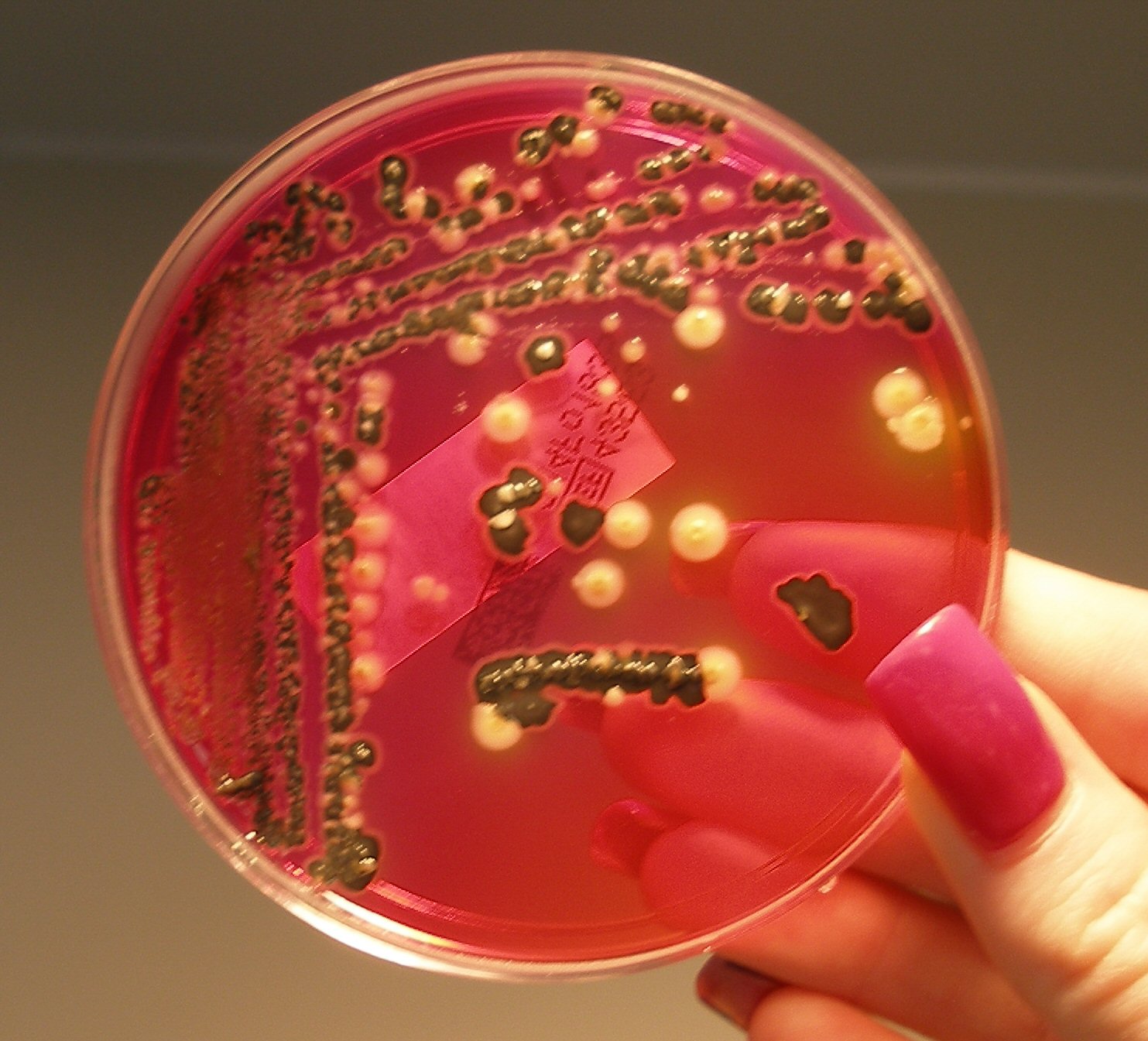XLD agar on:
[Wikipedia]
[Google]
[Amazon]

Xylose
Xylose ( grc, ξύλον, , "wood") is a sugar first isolated from wood, and named for it. Xylose is classified as a monosaccharide of the aldopentose type, which means that it contains five carbon atoms and includes an aldehyde functional gro ...
Lysine
Lysine (symbol Lys or K) is an α-amino acid that is a precursor to many proteins. It contains an α-amino group (which is in the protonated form under biological conditions), an α-carboxylic acid group (which is in the deprotonated −C ...
Deoxycholate
Deoxycholic acid is a bile acid. Deoxycholic acid is one of the secondary bile acids, which are metabolic byproducts of intestinal bacteria. The two primary bile acids secreted by the liver are cholic acid and chenodeoxycholic acid. Bacteria me ...
agar
Agar ( or ), or agar-agar, is a jelly-like substance consisting of polysaccharides obtained from the cell walls of some species of red algae, primarily from ogonori (''Gracilaria'') and "tengusa" (''Gelidiaceae''). As found in nature, agar is ...
(XLD agar) is a selective growth medium
A growth medium or culture medium is a solid, liquid, or semi-solid designed to support the growth of a population of microorganisms or cells via the process of cell proliferation or small plants like the moss ''Physcomitrella patens''. Differen ...
used in the isolation of ''Salmonella
''Salmonella'' is a genus of rod-shaped (bacillus) Gram-negative bacteria of the family Enterobacteriaceae. The two species of ''Salmonella'' are ''Salmonella enterica'' and ''Salmonella bongori''. ''S. enterica'' is the type species and is fur ...
'' and ''Shigella
''Shigella'' is a genus of bacteria that is Gram-negative, facultative anaerobic, non-spore-forming, nonmotile, rod-shaped, and genetically closely related to ''E. coli''. The genus is named after Kiyoshi Shiga, who first discovered it in 1897. ...
'' species from clinical samples and from food. The agar was developed by Welton Taylor
Welton Ivan Taylor (November 12, 1919 – November 1, 2012) was an American microbiologist, inventor and civil rights activist. He is known for his work on Food microbiology, food-borne pathogens, notably for developing tests for ''Salmonel ...
in 1965.
It has a pH of approximately 7.4, leaving it with a bright pink or red appearance due to the indicator phenol red. Sugar fermentation
Fermentation is a metabolic process that produces chemical changes in organic substrates through the action of enzymes. In biochemistry, it is narrowly defined as the extraction of energy from carbohydrates in the absence of oxygen. In food ...
lowers the pH and the phenol red indicator registers this by changing to yellow. Most gut bacteria, including ''Salmonella'', can ferment the sugar xylose
Xylose ( grc, ξύλον, , "wood") is a sugar first isolated from wood, and named for it. Xylose is classified as a monosaccharide of the aldopentose type, which means that it contains five carbon atoms and includes an aldehyde functional gro ...
to produce acid; ''Shigella'' colonies cannot do this and therefore remain red. After exhausting the xylose supply ''Salmonella'' colonies will decarboxylate lysine, increasing the pH once again to alkaline and mimicking the red ''Shigella'' colonies. Salmonellae metabolise thiosulfate to produce hydrogen sulfide
Hydrogen sulfide is a chemical compound with the formula . It is a colorless chalcogen-hydride gas, and is poisonous, corrosive, and flammable, with trace amounts in ambient atmosphere having a characteristic foul odor of rotten eggs. The unde ...
, which leads to the formation of colonies with black centers and allows them to be differentiated from the similarly coloured ''Shigella'' colonies.
Other Enterobacteria such as ''E. coli
''Escherichia coli'' (),Wells, J. C. (2000) Longman Pronunciation Dictionary. Harlow ngland Pearson Education Ltd. also known as ''E. coli'' (), is a Gram-negative, facultative anaerobic, rod-shaped, coliform bacterium of the genus ''Escher ...
'' will ferment the lactose
Lactose is a disaccharide sugar synthesized by galactose and glucose subunits and has the molecular formula C12H22O11. Lactose makes up around 2–8% of milk (by mass). The name comes from ' (gen. '), the Latin word for milk, plus the suffix '' - ...
present in the medium to an extent that will prevent pH reversion by decarboxylation
Decarboxylation is a chemical reaction that removes a carboxyl group and releases carbon dioxide (CO2). Usually, decarboxylation refers to a reaction of carboxylic acids, removing a carbon atom from a carbon chain. The reverse process, which is t ...
and acidify the medium turning it yellow.
*''Salmonella'' species: red colonies, some with black centers. The agar itself will turn red due to the presence of Salmonella type colonies.
*''Shigella'' species: red colonies.
*Coliform
Coliform bacteria are defined as either motile or non-motile Gram-negative non- spore forming Bacilli that possess β-galactosidase to produce acids and gases under their optimal growth temperature of 35-37°C. They can be aerobes or facultativ ...
s: yellow to orange colonies.
*''Pseudomonas aeruginosa
''Pseudomonas aeruginosa'' is a common encapsulated, gram-negative, aerobic–facultatively anaerobic, rod-shaped bacterium that can cause disease in plants and animals, including humans. A species of considerable medical importance, ''P. aerugi ...
'': pink, flat, rough colonies. This type of colony can be easily mistaken for Salmonella due to the color similarities.
XLD agar contains:
See also
*Agar plate
An agar plate is a Petri dish that contains a growth medium solidified with agar, used to culture microorganisms. Sometimes selective compounds are added to influence growth, such as antibiotics.
Individual microorganisms placed on the plate wil ...
*MRS agar
De Man, Rogosa and Sharpe agar, often abbreviated to MRS, is a selective culture medium designed to favour the luxuriant growth of ''Lactobacilli'' for lab study. Developed in 1960, this medium was named for its inventors, , , and . It contains ...
* R2a agar
References
External links
Biochemistry detection reactions Microbiological media {{Microbiology-stub